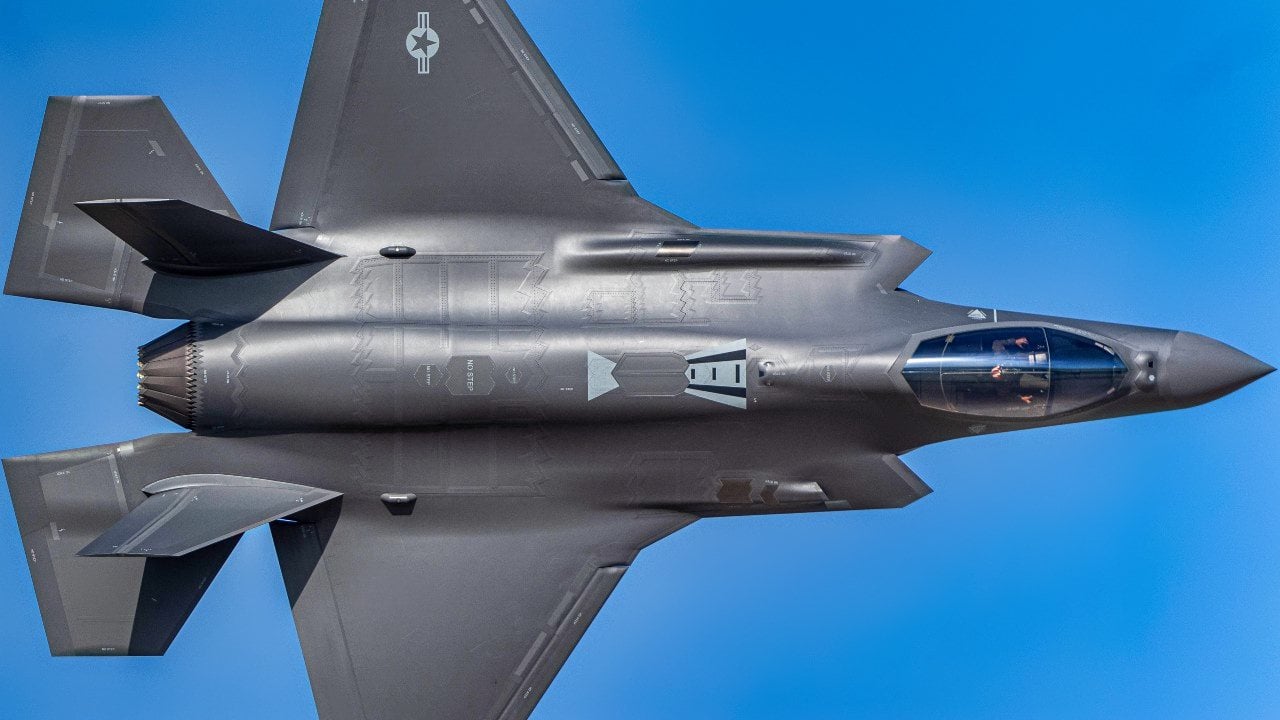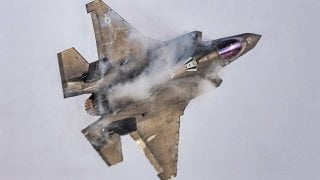China Has A F-35 Fighter 'Problem' It Might Never Be Able Fix
China’s quest to field a stealth fighter that rivals the U.S. F-35 faces setbacks due to material science challenges, particularly in developing advanced Radar Absorbent Material (RAM).
What You Need to Know: China’s quest to field a stealth fighter that rivals the U.S. F-35 faces setbacks due to material science challenges, particularly in developing advanced Radar Absorbent Material (RAM).

-As former U.S. Navy Operations Specialist Eric Wicklund explains, while replicating the F-35’s stealthy design may be possible, reproducing the F-35’s RAM capabilities remains elusive. Wicklund compares China’s situation to reverse-engineering Damascus steel without understanding the underlying process.
-This gap leaves Chinese stealth fighters less effective in evading radar. Meanwhile, the F-35’s advanced avionics, sensor fusion, and electronic warfare systems ensure it maintains an edge in situational awareness and networked capabilities.
Why China’s Fighter Jets Still Lag Behind the F-35: Material Science Matters
Months back, Quora user Eric Wicklund, a former U.S. Navy Operations Specialist, explained why the Chinese cannot yet field a true competitor to the F-35.
“Just producing a stealthy-looking shape is only one part of many different aspects of stealth,” Wicklund began. “Even internal structures, and how they’re configured, matter.” One respect where China is deficient, Wicklund argues, is in materials science, and this shortfall has impacted Beijing’s ability to develop effective Radar Absorbent Material (RAM), which can absorb or scatter up to 80% of incoming radar waves.
According to Wicklund, stealing a stealth shape from a computer is simple enough, but developing cutting-edge RAM is a more difficult task. “I could hand the Chinese a chunk of RAM,” Wicklund wrote, “they could analyze it, and realize it is genuine, but the problem is in reverse-engineering it. They know what it is, but wouldn’t know how to make it.”

Wicklund explained that giving American RAM technology to the Chinese would be like giving a Damascus steel blade to an Egyptian swordmaker. The Egyptian would recognize the superior quality of the blade but would not be able to reverse-engineer the thing. That’s the problem the Chinese are currently facing with RAM technology.
Wicklund equated China’s trouble with RAM to their recent troubles developing the WS-15 jet engine. For years, the Chinese struggled to create fan blades that could withstand the heat generated within a jet engine. Finally, China’s material science caught up to the task, and the WS-15 has since entered production. “RAM is going to be another difficult stepping stone, and until they master it, China’s stealth fighters will be outmatched by the F-35.”
F-35 Fighter: On the Cutting Edge
The U.S. is currently the only nation capable of developing and producing an aircraft as sophisticated as either the F-35 or the F-22.
Designed for air superiority and strike missions, the F-35 is also equipped to perform electronic warfare and ISR functions. The most notable features of the F-35 are the advanced avionics and sensor fusion, which grant the pilot an unmatched level of situational awareness.
Curiously, the F-35 was not designed to be as kinetically capable or as maneuverable as the F-22 fifth-generation fighter. While the F-35 can keep up with fourth-generation aircraft, the airframe was designed with stealth and sensor fusion as priorities, rather than maneuverability.

Key sensors aboard the F-35 include the Northrop Grumman AN/APG-81 active electronically scanned array radar; the BAE Systems AN/ASQ-239 Barracuda electronic warfare system; the Northrop Grumman/Raytheon AN/AAQ-37 Electro-optical Distributed Aperture System; Lockheed Martin’s AN/AAQ-40 Electro-Optical Targeting System; and the Northrop Grumman AN/ASQ-242 Communications, Navigation, and Identification suite.
The sum of all of the advanced systems is an aircraft with better situational awareness, better command-and-control capabilities, and better network-centric capabilities than any aircraft in production.
About the Author: Harrison Kass
Harrison Kass is a defense and national security writer with over 1,000 total pieces on issues involving global affairs. An attorney, pilot, guitarist, and minor pro hockey player, Harrison joined the US Air Force as a Pilot Trainee but was medically discharged. Harrison holds a BA from Lake Forest College, a JD from the University of Oregon, and an MA from New York University. Harrison listens to Dokken.
Image Credit: Creative Commons.


